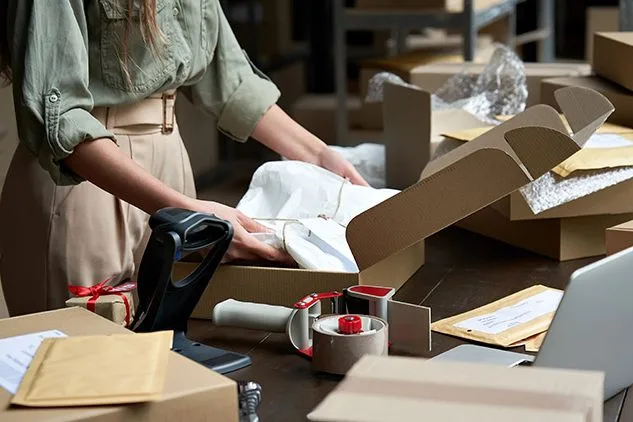Ship-From-Store Best Practices to Remember

When we ship online orders to our customers, fulfillment centers are often at the front and center of the process. But traditional fulfillment isn’t the only way to pack, pick, and ship orders anymore. In fact, for many retail businesses, alternative fulfillment methods like “ship-from-store” can actually be cheaper, easier, and faster when done correctly.
In this post, we’ll highlight 3 best practices that will help you capitalize on the benefits of ship-from-store fulfillment.
Select the Best Store Locations
One of the biggest concerns businesses have with ship-from-store fulfillment is that brick-and-mortar stores are ill-equipped to handle the additional load of omnichannel fulfillment. In some cases, this is because the physical location of the store is far enough away from delivery locations to make ship-from-store fulfillment more efficient and cost-effective than traditional fulfillment. In others, the concern is tied up in the lack of space and infrastructure the store has.
However, while the concern is legitimate, not every brick-and-mortar store falls into these categories. In fact, many don’t. By simply selecting a small subset of store locations that both have space for additional inventory and fulfillment processes (like packing and picking) and are close enough to customers to warrant ship-from-store fulfillment, you can easily cut down on order cycle time and carrier costs for a significant number of orders.
Get Your Systems in Place
When your stores make the jump from foot traffic sales to omnichannel fulfillment, you can’t reasonably rely on the same technology to manage online orders. Not only is it easy to lose track of inventory, but orders can get mixed up or lost as well.
Having an omnichannel order management system (OMS) in place allows you to handle all of your in-store purchases and your ship-from-store fulfillment easily. You can view inventory clearly and track its allocation to online orders and store shelves. And you can carefully map out your fulfillment process — from order picking to carrier trucks and beyond. All the information you need to make omnichannel fulfillment run smoothly can be obtained with the right technology.
Educate & Train Employees
Anytime you implement an omnichannel system, you need to make sure your employees understand how to use it. Otherwise, you can end up with order backlogs, slow order cycles, and inaccurate orders being delivered to customers.
That’s where training frontline employees comes into play. By walking them through the new ship-from-store system; explaining their roles; and detailing the picking, packing, and shipping processes their store is adopting, you can quickly get them up to speed.
That doesn’t mean all the training and education you offer your employees will look the same, as their roles and the process they follow will depend on the technology and best practices you implement for each store. But, by taking the time to ensure all of your employees understand how “ship-from-store” works at their given location, you’ll ensure greater success with your new ship-from-store fulfillment process.
Ship-from-store fulfillment is often thought to be an unnecessarily complicated and challenging process to adopt. However, by selecting the right locations, putting the right technology in place, and training your employees to handle your new omnichannel fulfillment, you can set yourself up for success.
